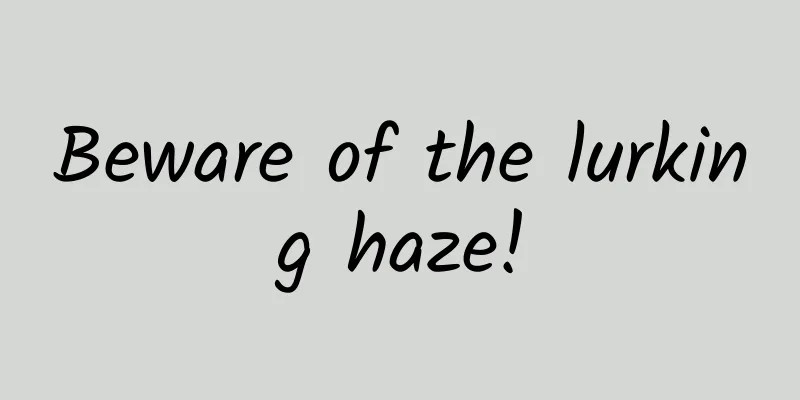Ask me about the radiology department

Author: Lu Xiaoping, Radiologic Technologist, Peking Union Medical College HospitalReviewer: Xue Huadan, Deputy Director of the Department of Radiology, Peking Union Medical College Hospital, and Director of the Department of Radiology, Xidan Campus ========================================================== The radiology department is a very important auxiliary department in the hospital, integrating examination, diagnosis and treatment. Many clinical diseases require radiology examinations to achieve the purpose of diagnosis and treatment. There are many types of radiology examinations. Do patients have the following questions? Let's learn about it together! =================================================================================================== Question 1: Can I breastfeed my child after the enhanced examination? Doctor: When performing CT or MRI enhanced examinations, intravenous injection of contrast agents is required, commonly known as "taking medicine". CT enhancement uses iodine-containing contrast agents, and MRI enhancement uses gadolinium-containing contrast agents. According to numerous domestic and international guidelines/consensus, only a very small amount of contrast agent can reach the breast milk of a breastfeeding mother after an enhanced CT or MRI examination, and the contrast agent that enters the infant's intestines is negligible. Therefore, breastfeeding after an enhanced examination using contrast agents is relatively safe and can be continued uninterruptedly. There is no need to temporarily interrupt breastfeeding, discharge or discard milk . Of course, considering mothers' concerns about their babies' safety and the guidance of contrast agent manufacturers at home and abroad, mothers can pump out breast milk for their babies before the enhanced examination. After the examination, mothers can drink more water and urinate more, and it is also okay to breastfeed after 24 to 48 hours. Question 2: Why did the enhanced examination ask me to drink more water? I felt like I was going to vomit! Doctor: Drinking more water before and after the enhanced examination is mainly to protect the patient's kidney function . Drinking more water can reduce the concentration of contrast agent in the blood, reduce the burden on kidney metabolism, promote the excretion of contrast agent in the body, and further reduce the safety risks caused by contrast agent. In addition, water is a natural contrast agent. Drinking more water can fill the gastrointestinal tract, form a good contrast with other tissues , and make the gastrointestinal wall structure and other solid organs clearly distinguishable and displayed (as shown below). Therefore, patients with gastric cancer and Crohn's disease generally need to drink a large amount of water to fill the gastrointestinal tract before the examination. However, not all diseases require drinking more water for enhanced examination . For example, if you suspect severe intestinal obstruction, intestinal perforation, acute pancreatitis, etc., you should not drink water. In addition, patients with chronic kidney disease should not drink too much water. When it comes to specific diseases and examination items, you should make relevant preparations according to the doctor's requirements. Question 3: Why aren't I allowed to eat during the enhanced examination? Doctor: That's because during enhanced CT or MRI examinations, some patients may experience unpredictable allergic reactions to contrast agents , such as nausea, vomiting , bronchospasm, laryngeal edema , etc. If they are not on an empty stomach at this time, the vomitus may flow into the trachea through the esophagus, causing suffocation and threatening the lives of patients. In addition, when conducting abdominal and pelvic examinations, if there is food residue in the gastrointestinal tract, it may interfere with the normal display of tissue structure and affect image diagnosis. Question 4: Why was I asked to inhale and exhale during the examination? Doctor: There are generally three instructions for breathing coordination during various examinations in the radiology department, namely: inhale, exhale and hold your breath. When you inhale, the tissue being examined (mainly the lungs) will expand and fill up. The lung tissue will then become more transparent, the examination field of view will be clearer, and it will help to display small anatomical structures. The exhalation command is mainly used in abdominal examinations. Exhalation will reduce the air content in the lungs, raise the diaphragm, reduce the interference of irrelevant tissues on the examined area, and clearly display more abdominal organs below the diaphragm. Whether you are inhaling or exhaling, you will generally be asked to hold your breath at the end, that is, stop breathing and keep your chest and abdomen still. At this time, the internal structure of the human body will remain relatively still. The main purpose is to eliminate the motion artifacts caused by breathing during the examination and avoid image blur. Different examinations have different breathing instructions, such as inhale-hold your breath, exhale-hold your breath, inhale-exhale-hold your breath, calm and even breathing , etc. Following these instructions can ensure that doctors obtain clear and reliable images needed clinically, thereby making accurate diagnoses and treatment plans. Question 5: Can I do an MRI if I have a pacemaker in my body? Doctor: Pacemakers are implanted electronic devices in the heart. According to relevant consensus, when patients with traditional pacemakers undergo MRI examinations, serious potential risks may occur, such as: ① Pacemaker output is suppressed, unable to pace, instantaneous asynchronous pacing, rapid cardiac pacing, induced atrial fibrillation, etc.; ② The tissue near the pacemaker system (especially the heart tissue near the lead end) is burned; ③The battery is exhausted prematurely; ④Complete failure of the device, etc. At present, most of the cardiac implantable electronic devices used in clinical practice in China are not compatible with MRI. Therefore, it is strictly forbidden for patients with traditional pacemaker implants to undergo MRI examination, which is an absolute contraindication. In recent years, new antimagnetic/compatible pacemakers have appeared on the market. They are small in size, light in weight, have good magnetic field stability, and are relatively expensive. However, there are still many restrictions on MRI examinations for patients implanted with such pacemakers, such as implantation time and magnetic field strength requirements. Therefore, MRI examinations should also be performed with caution. If MRI examinations are necessary, the risks and benefits must be evaluated with clinical physicians, the examination conditions must be strictly controlled, and the examination can only be performed after the professional physician or pacemaker engineer has adjusted the procedure. References [1] Cova MA, Stacul F, Quaranta R, et al. Radiological contrast media in the breastfeeding woman: a position paper of the Italian Society of Radiology (SIRM), the Italian Society of Paediatrics (SIP), the Italian Society of Neonatology (SIN) and the Task Force on Breastfeeding, Ministry of Health, Italy[J]. European Radiology, 2014,24(8):2012-2022. [2] El-Sayed, Yasser, Heine, et al. Guidelines for Diagnostic Imaging During Pregnancy and Lactation[J]. Obstetrics and Gynecology: Journal of the American College of Obstetricians and Gynecologists, 2016, 127(2):E75-E80. [3] Chinese Medical Association Radiology Branch Contrast Media Safe Use Working Group. Guidelines for the Use of Iodine Contrast Media (2nd Edition) [J]. Chinese Medical Journal, Vol. 94, No. 43, 2014, pp. 3363-3369, MEDLINE ISTIC PKU CSCD CA, 2015. DOI: 10.3760/c ma.j.issn.0376-2491.2014.43.003. [4] Magnetic Resonance Group of the Radiology Branch of the Chinese Medical Association, Quality Control and Safety Working Committee of the Radiology Branch of the Chinese Medical Association. Chinese expert recommendations on the clinical safety of gadolinium contrast agents[J]. Chinese Journal of Radiology, 2019, 53(7):539-544. DOI:10.3760/cma.j.issn.1005-1201.2019.07.002. [5] Quality Management and Safety Management Group of the Radiology Branch of the Chinese Medical Association, Magnetic Resonance Imaging Group of the Radiology Branch of the Chinese Medical Association. Chinese expert consensus on magnetic resonance imaging safety management [J]. Chinese Journal of Radiology, 2017, 51(10): 725-731. DOI: 10.3760/cma.j.issn.1005-1201.2017.10.003 [6] Chinese Medical Association Imaging Technology Branch, Chinese Medical Association Radiology Branch. Expert consensus on CT examination technology[J]. Chinese Journal of Radiology, 2016, 50(12): 916-928. DOI: 10.3760/cma.j.issn.1005-1201.2016.12.004. [7] Chinese Medical Association Imaging Technology Branch, Chinese Medical Association Radiology Branch. Expert consensus on MRI examination technology[J]. Chinese Journal of Radiology, 2016, 50(10):724-739. DOI:10.3760/cma.j.issn.1005-1201.2016.10.002. |
>>: Are super males "violent demons" and super females "stupid beauties"?
Recommend
Symptoms of varicose veins of the vulva
Pregnancy is a very painful process, because preg...
What are the symptoms of a small uterus?
Each of us lives in this world as an independent ...
What are cervical cells?
Cervical cells are cervical epithelial cells, whi...
Levonorgestrel dispersible tablets
Both levonorgestrel tablets and dispersible table...
What are the common causes of colds? Who is more likely to catch a cold?
People often think that contact with many people ...
What to do if you have stomach pain after abortion
With the continuous progress of society, more and...
What causes lower abdominal pain during menstruation?
Many women suffer from various discomfort symptom...
Recovery after myomectomy
Uterine fibroids are a very common gynecological ...
People with high blood pressure, do you know your blood pressure after falling asleep? This blood pressure is very important
Many people with high blood pressure consulted Hu...
Can I still exercise if I have high blood pressure? This kind of exercise is as effective as blood pressure medication!
They say high blood pressure It is the "stan...
Yellow leucorrhea without odor during lactation
During breastfeeding, if the leucorrhea is yellow...
7 months pregnant right lower abdomen pain
Many female friends will experience many symptoms...
Chinese patent medicine for treating polycystic ovary
The occurrence of polycystic ovary disease will d...
What are the symptoms of bacterial vaginosis?
Vaginitis is everywhere. In my country, 60% of wo...
It turns out that the goddess has also stepped on the trap of "unconscious eating"! ? No, this is a bad habit
If you don’t change your mindless eating, you wil...









